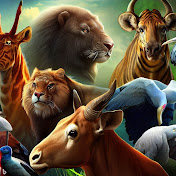CONSERVATION OF NATURAL RESOURCES
.jpeg)
Human actions have devastating or irreversible effects on the environment, while Earth’s ecosystems can cope with natural change. In the last 50 years, Earth has lost 60% of all terrestrial wildlife and 90% of big ocean fish. We may be facing a mass extinction event, where more than 75% of species are wiped out. Nature conservation is urgent and vital. Theodore Roosevelt, a former 20th-century president of the USA, said: “The conservation of natural resources is the fundamental problem. Unless we solve that problem, it will avail us little to solve all others.” His words show that nature conservation has been a long-standing issue and that we need to act now. Nature conservation Nature conservation is the care and protection of Earth’s natural resources for current and future generations. This means preserving the diversity and functions of life on Earth, which support human well-being and prosperity. Earth’s natural resources include air, minerals, plants, so...

